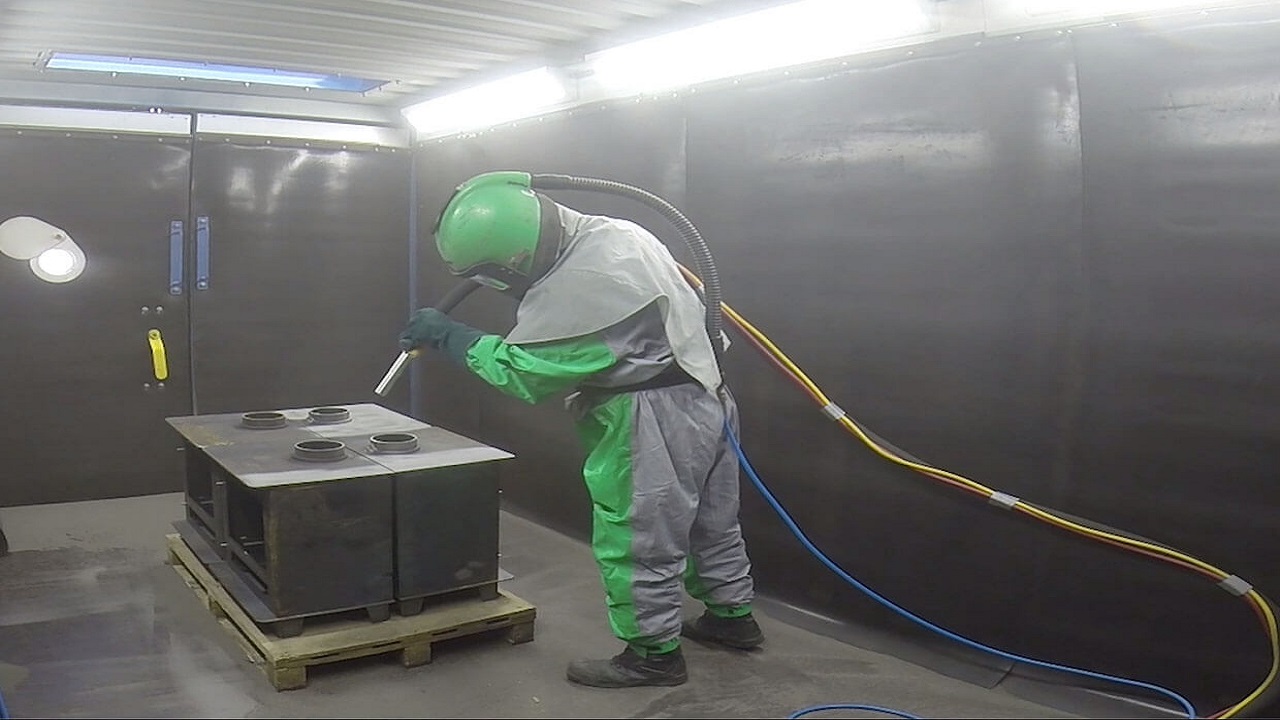A blast room, sometimes known as a sandblasting booth, is a crucial step in the surface preparation process for a variety of industries. This blasting booth is famous because of its convenience and easiness to travel around. This also offers a clean and safe working environment because of the closed system and enclosed components. These are particularly crucial when handling large, heavy objects that are difficult to move. The components of the sand blasting booth, their uses, and their operation will all be covered in this article.
Anatomy of a Sand Blasting Booth
Enclosure
The enclosure utilized for the procedure is the first and most crucial component of a sandblasting booth. Usually constructed from sturdy steel plates, it creates a sealed space for the workpiece to be treated together with the abrasive substance. To guarantee that the booth is not readily damaged, certain materials that are resistant to wear and tear are also applied to the inner walls.
Essential Components
The blast hose, nozzle, and blast pot are the three main components of the abrasive blasting system. Abrasive media is kept in place with a blast pot which can be then pumped through the nozzle at the required component whose cleaning is desired. Many different kinds of abrasives can be used; the optimum kind to use depends on the task at hand. Examples of these include sand, steel grit, and glass beads.
Dust Collection System
Another important component that needs to be considered is the dust collection system which is the most important factor and component of the whole system. Since all the components are enclosed in a container, so this is a clean process that collects and stores dust and other particles inside any environment. To collect and hold particle matter, blowers, and filters are frequently installed on dust collectors.
Lighting and Ventilation
Appropriate lighting is very vital because it enables the operators to have a clear view of the workpiece to blast it effectively. Bright, robust luminaires are mounted in the booth. Also, proper ventilation is required to control air quality within the space and avoid the accumulation of toxic gases.
Operational Considerations
Maintenance
It is important to perform routine maintenance to ensure that the sandblasting booth is in good shape to work on. This includes checking and replacing any worn-out parts; cleaning the dust collection system; and checking on the status of the blasting equipment.
Operator Training
It is therefore important to ensure that the operators are well-trained to get the best out of the sandblasting booth. These include safety measures, handling of equipment, and maintenance of the tools used in the training process.
Environmental Compliance
The environmental issues concerning the disposal of the abrasive media and dust used in sandblasting booths must be adhered to. This paper also recognizes that there is a need for proper waste management practices to reduce the adverse effects on the environment.
Conclusion
An extremely helpful piece of equipment in businesses where proper surface preparation is required is a sandblasting booth. The purpose of this paper is to explain the many components of the sandblasting booth, the benefits of utilizing it, and the steps that must be followed to optimize its use in business. Using a sandblasting booth that is properly maintained and operated can greatly improve overall productivity as well as job safety and quality.


